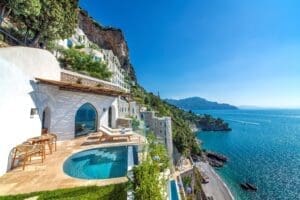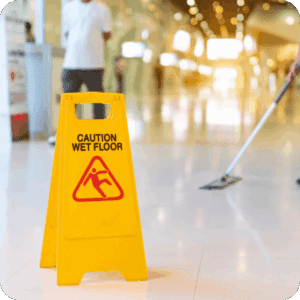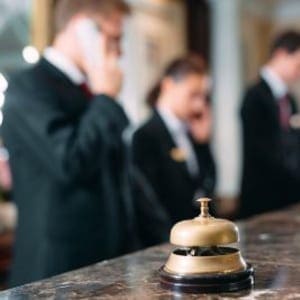
Sustainability and energy efficiency technologies are not just about saving our planet. Whatever the validity is behind vendors’ claims that their particular product or service is the ‘best energy saver of all time’, the fact remains that overall they will help reduce utility costs in the long run. In the short-term, however, managing the associated upfront costs can make implementation especially difficult. In other words, with cash flow a constant issue, you will always have to pick and choose which upgrades to authorize and which ones aren’t worth the price tag.
Having worked in this niche space for nearly two decades, and helping owners and operators with their efficiency goals, I’ve developed a list of ten observations on various products and services that together form a broad guideline to follow when getting underway with an energy savings plan.
- Power factor correction capacitors. This one has been around for a long time but still rears its ugly head occasionally. Without going into a very esoteric discussion of power factor, let’s get one thing straight. These devices do not save energy (kilowatt-hours). Any demonstration to that effect, however convincing, is not what it appears! Capacitors can and do help your energy bill in one regard, though. They will eliminate any charges for reactive power (rkva). If you don’t see a charge for this on your bill, these are a waste of time and money.
- Window film. I know you’re saying to yourself, “This stuff works.” So why am I trashing it? Actually, I’m not. Many types of window film do in fact cut down on solar loads. And in some instances, it’s absolutely required. But unless you have one of those truly hot spots with no other means of rectifying the problem, solar film rarely has an economic payback. It’s an expensive material that is to be used as a long-term last resort rather than as a quick fix energy conservation measure.
- Variable frequency drives (VFD) for all motors. VFDs have been hailed as instant energy savers – a sort of miracle drug for your mechanical plant. And when applied correctly, they become just that. As you might have already guessed, ‘applied correctly’ is the operative clause. Just because you have an electric motor running some device doesn’t mean a VFD will make it run better or more efficiently. The driven device – be it a fan, a pump or other piece of gear – must be able to run effectively at slower speeds because it operates as part of a larger system. That is not the case with a large percentage of your motors. Beware of anyone telling you that every motor needs a VFD.
- Variable frequency drives for my chillers. I single this out from the item above because it requires such a tremendous investment. A VFD for even a mid-sized chiller can easily cost over $30,000 USD. While any number of smart people may tell you that you’ll see paybacks in under three years, here’s what they’re actually saying. A VFD for your chiller may in fact be just the thing your plant needs, but then again maybe not. This project requires a competent engineer to first analyze your chiller’s loading history to determine whether a VFD is an appropriate and economical fit. Unfortunately, most people selling these don’t go to that trouble.
- LED lighting everywhere. The question here isn’t whether LED lamps will save you energy dollars – of course they will! When it comes to this ‘panacea of lighting technology’, the devil is in the details. So many people have jumped onto the LED wagon without doing the appropriate due diligence, and the result is often a lighting nightmare. LEDs are curious animals with very different characteristics from more conventional forms of lighting. Color, brightness, light spread, fixture type and other factors all need to be taken into account in an LED retrofit, as any of these can greatly affect the outcome of the upgrade.
- Energy audits from the electric utility. I hear this often, “I don’t need an energy audit; I just had one done by XYZ Power Company and it was free!” You should know by now that you get what you pay for it. Some electric utilities have auditors that know a thing or two about lighting. But beyond that, the utility companies simply can’t afford to employ experienced engineers who understand all the complex HVAC systems and give away their highly specialized work for free.
- New product that will trim 40% off your energy bill. No doubt you’ve heard this titillating statement before in one form or another – a product or a system that will cut an amazing amount off your utility bill. There is virtually no one single device out there that can lower your building’s energy cost by that much on its own. If you have an old lighting system, then LEDs could cut your lighting energy bill by 40% or more. But that’s a far cry from lowering your entire energy spend by that same percentage. If it seems too good to be true, it probably is.
- New software will save you thousands: This is such a huge category because there are so many new offerings coming out virtually every week. In general, I’m all in favor of using automation of some sort to help manage your building’s energy use. But take heed, don’t buy any software that you aren’t prepared to get fully engaged in or have someone else operate for you. Automated software alone will not solve your problems or lower your energy bills. The people that operate it will.
- If you turn this one dial up, you’ll save money. It never fails; every time I walk into a hotel, I see setpoints that are way beyond where they should be. I’m not just talking about a guestroom thermostat being at 68oF during summer. In most large hotels, there are scores of setpoints from chilled water temperatures to static pressure or differential pressure settings. All are designed with a certain range in mind. They get out of spec when the people adjusting them haven’t been properly schooled on the overall system operation.
- Your engineering team has everything running as efficiently as possible: In my years of auditing hotels, I would say that most engineering teams are doing the best they can to make their properties run as smoothly as possible. But whether we want to admit it or not, hoteliers can no longer afford to have as big or as educated a staff as they require. Junior engineers these days lack the proper training to be able to keep up with all the complex systems they have to deal with. I haven’t been in a hotel yet that has had ‘everything running as efficiently as possible’. It’s a constant struggle, and sometimes you’ll need external help to fully grasp where else you can save.
I am all about energy efficiency, but it drives me crazy to see people succumb to a smooth-talking salesman. It’s even worse when hoteliers end up purchasing something that they don’t necessarily need, won’t perform as claimed or just flat out doesn’t work.
Hopefully these ten abovementioned warnings have helped you rethink how you approach energy savings.
About the author

Jim Gieselman is the founder of Emeritus Consulting. His broad experience of over 40+ years enables him to understand the intricacies of hotel HVAC and lighting system operations – because understanding is the key to delivering true energy opportunities to hotel clients. His areas of expertise center around his system knowledge of how hotel infrastructure, especially HVAC, should operate. Through building energy assessments (audits) and retro-commissioning, Jim identifies and quantifies energy inefficiencies then delivers practical solutions. Jim is also a member of Cayuga Hospitality Consultants.















